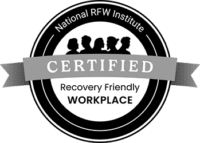Navigating Managed Care: Closing Gaps in Care for Payers, Providers and Members
Partnering with Managed Care Organizations and Provider Networks to reduce costs and better manage utilization of health services.
By Nakecia Taffa, Quality Improvement and Health Equity Director for GoMo Health

Throughout my career I’ve had both the opportunity and pleasure of working for several health plans managing multiple provider networks and Federally Qualified Health Centers. Year after year I often sat thinking about the overarching goals set forth by each State’s Managed Care organizations, focusing on the “how and why” when it comes to improving health plan performance, HEDIS quality improvement and activating member engagement for healthier outcomes. By listening and connecting with the most reliable resources in the healthcare industry – members and the people who I like to call the “ladies and gentlemen behind the desk” – I began to understand the immense need for change and the challenges to get there. This led me to GoMo Health, where we create, activate and scale these improvements daily.
While most managed care organizations go to great lengths to comply with Medicaid and Medicare mandates, many are still struggling to meet their goals. During my time working at these organizations, it became clear that leadership did not understand or have the desire to explore new ways to implement process improvement plans to affect positive change, even when tactical initiatives did not meet the goals set forth.
Then COVID-19 shined a spotlight on our broken healthcare system and its’ struggling infrastructure. The pandemic created staffing shortages across the healthcare industry – exposing further gaps in access to care and widespread disparities and inequities.
As the Quality Improvement and Health Equity Director for GoMo Health, I’ve been able to leverage my knowledge and experience to create visual frameworks and strategic workflows to educate, activate and scale the ability to close gaps in care.

“The Why”
Health Plan Challenges
Healthcare costs continue to the rise, and our system of care is failing to reach our most vulnerable populations.
- Staffing Shortages
- Regulatory Changes
- Ineffective Medical Billing and Coding Processes
- Lack of Partnership with Key Stakeholders
- Failure to Address Healthcare Disparities
- Lack of Emphasis on Promoting Healthplan and Healthcare Literacy
- Insufficient Resources to Focus on Strategies to Increase HEDIS and STAR Ratings as well as both HOS and CAHPS Scores
Member Challenges
Members who might not know where their next meal is coming from typically find it hard to prioritize their health, and in turn, wait until they are extremely sick to seek help (usually in the emergency department).
- Homelessness or Housing Instability
- Mentally and Physically Overwhelmed with Diagnosis
- Food and Water Insecurity
- Financial Instability
- Access to Care, Resources or Transportation
- Knowledge of Healthcare Literacy
- Ability to Foster Trust within Community-Based Organizations and Providers
By addressing both social and personal determinates of health, we are not only able to bridge the divide in population health, but we can also go a long way toward advancing health equity in some of our most vulnerable populations.
Provider Network Challenges
Strained staff and resources are leading to burnout, resulting in failure to meet deadlines for services.

- Lack of Focus on Strategies to Scale Outreach and Follow-Up
- Ensuring NCQA Documentation Standards are Met
- Ineffective Billing and Coding Management
- Lack of Proper Healthcare Contract Management to Maximize Reimbursements
Snapshot of the Current Landscape
A physician’s office staffed with 1-2 care coordinators just received the following monthly care gap reports with the expectation that they will work to close them (with no guidance or support).
- Payor #1
- 6,000 members
- 3,000 noncompliant for variety of preventive care screenings or follow-up
- 1,000 of which are not in their system
- Over 75% have value-based contracts in place
- Payor #2
- 5,752 members
- 3,000 noncompliant for variety of preventive care screenings
- 1,000 of which are not in their system
- Over 40% have pay for performance models
How do we expect overwhelmed and understaffed provider offices to meet the expectations of health plans? While there is no simple solution, there is a lot we can be doing to positively impact the current situation. Outlined below are a few ways to get started:
Bring Key Stakeholders to the Table
Allow key stakeholders a seat at the table to create a strategic plan of action. We are all working toward the same end goal so let’s collaborate to reach it. While working in a managed care organization, I brought all stakeholders together to address value-based contracts, host billing and coding lunch and learns and brainstorm actionable strategies to effectively partner and address any issues in real time. These strategic partnerships resulted in a streamlined approach to care, increased revenue and reduced billing and coding errors to effectively close care gaps.
Who Are the Key Stakeholders?
- Health Plan: Quality Improvement representatives, Pharmacy Director, Chief Medical Officer, Community Engagement Associate, Care Management
- Provider Network: Providers, Nurses/Nurse Managers, Population Health Managers/Care Coordinators Front Desk Staff, Billing and Coding Team
There Is No One-Size Fits All Solution
Payers should understand that no two members are the same when it comes to each member’s understanding of healthcare or health plan literacy. Proper allocation of both staff and funds is key to provider activation and engagement necessary to successfully reach quality initiative goals.
Ways to help members successfully
- Supporting and coaching a patient through their healthcare journey
- Addressing both personal and social determinates of health
- Nurturing and engaging on a more personal level
Providers on the other hand need to understand the capacity in which they can fulfill the requirements of a contract before they agree to any pay for performance models.
Ways providers can accomplish this
- Adequate staff to outreach and follow-up on care
- Engagement strategies to successfully educate and encourage members to participate in care
- Adopt a closed loop approach to the care delivered to communities they serve
In both cases, the payers and providers can utilize digital therapeutics to help accomplish these goals and provide lines of site beyond the four walls of a hospital or clinic for a closed loop process of care that will lessen the divide in health disparities and inequities.

Embracing Change with A New Era of Evidence-Based Patient Engagement
BehavioralRx®, the evidence-based science of personalized patient engagement, is designed to stimulate activation and foster and develop human resiliency. GoMo Health’s Concierge Care solutions are driven by the fundamental principles of BehavioralRx and have proven success in maximizing how members engage with their health plans and providers by modifying behaviors of patients with chronic and complex conditions. The result — significant improvement in adherence and health outcomes as well as a reduction in costs.
Proven Results Utilizing Concierge Care within Managed Care Organizations
- Improved workflows for optimal activation to minimize staff fatigue: US-based health plan was able to not only measurably improve service delivery for individual member needs but increase each Case Manager’s caseload by an average of 206% over nine months.
- Increased medication adherence: in one program for an ACO (Accountable Care Organization), medication adherence increased 10% when patients received condition education and medication refill reminders via mobile engagement.
- Decreased gaps in care and population disparities: closed gaps in care for engaged members of a U.S.-based health plan by 6%-7% in multiple categories in just one month.
- Built relationships and increased resiliency for members, payers, and providers: 95% retention rate in one health plan program with a 4% reduction in ER visits with engaged members vs. non-engaged members
Additional program benefits
- Increased HEDIS, STARs and CAHPS scores by supporting quality initiatives
- Increased joy in practice
- Billing, coding, and reimbursement opportunities captured
GoMo Health helps Medicaid and Medicare-reimbursed providers better connect with patients, reduce treatment costs, decrease health disparities, improve health literacy and engagement through our value-based programs.
Measurable ROI and Improved Outcomes from a Postnatal Medicaid Digital Therapeutic Program
Learn how the WellCare Baby’s First program improved outcomes within a Medicaid population of women and their newborns.
ROI figures in the report include:
- ER visit costs
- Inpatient readmission costs
- Total medical costs
Download the ROI report today.







Find Us Online